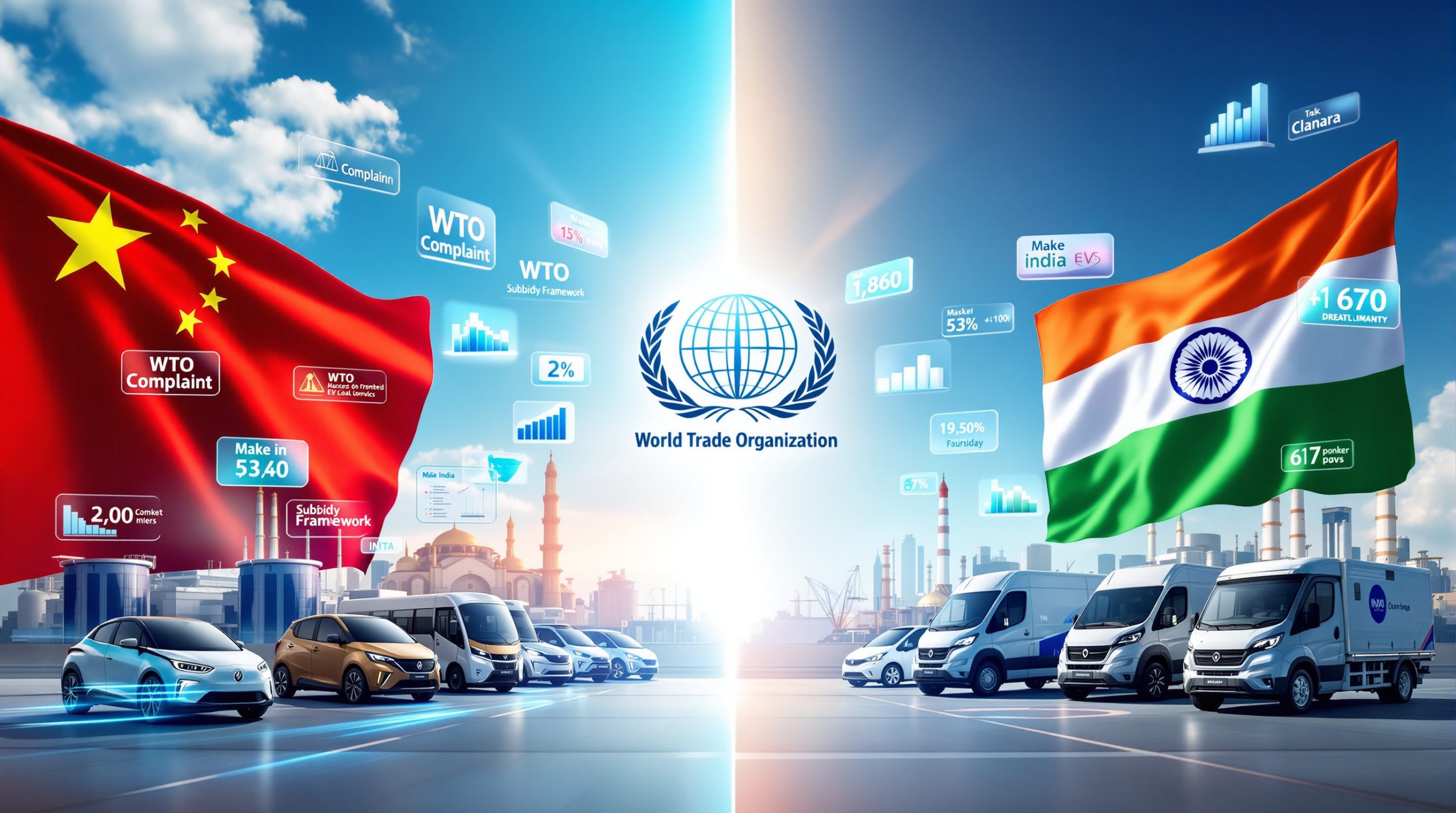Understanding the Strategic Vulnerability of Processing Infrastructure
Modern economies face a critical blind spot in their resource security strategies that extends far beyond traditional supply chain concerns. While nations invest billions in securing access to raw materials, the infrastructure required to transform these materials into usable products often receives insufficient strategic attention. This gap in understanding creates profound national security vulnerabilities that can be exploited during periods of geopolitical tension.
The strategic importance of smelting capacity for national security has become increasingly apparent as global supply chains face unprecedented disruption. Processing facilities represent concentrated chokepoints that require massive capital investments, specialized technical expertise, and decades to develop fully. Unlike mining operations that can theoretically be distributed across multiple geographic locations, smelting and refining capacity creates strategic dependencies that adversaries can exploit. Furthermore, recent strategic antimony investment initiatives demonstrate how governments are recognising these vulnerabilities.
Key Strategic Dependencies Include:
• Processing facilities requiring decades to develop and massive capital investments
• Specialized technical expertise becoming concentrated in specific regions
• Environmental regulations and energy costs creating geographic advantages for certain nations
• Geopolitical tensions instantly transforming processing partners into strategic competitors
The Hidden Leverage of Midstream Control
Nations controlling processing capacity wield disproportionate influence over global supply chains, far exceeding their raw material endowments. A country may possess abundant mineral reserves but remain strategically vulnerable if it lacks domestic processing capabilities. This dependency relationship creates multiple pressure points that can be activated during periods of international tension.
The interconnected nature of specialty metal production amplifies these vulnerabilities significantly. Base metal smelters produce critical byproducts essential for defense applications, creating cascading dependencies that extend far beyond primary metal production. When zinc smelting capacity is constrained, gallium and germanium production suffers simultaneously, affecting semiconductor and radar system manufacturing. In addition, these processing limitations highlight potential beneficiation opportunities that nations might pursue to strengthen their supply chains.
Processing Bottlenecks vs. Resource Abundance
Mining operations can theoretically be established across multiple geographic locations, providing supply diversification opportunities that reduce single-point-of-failure risks. However, smelting and refining facilities represent concentrated chokepoints that require fundamentally different strategic considerations and substantially longer development timelines.
Critical Infrastructure Requirements:
• Specialised Infrastructure: Custom-built facilities costing billions of dollars with highly specific technical requirements
• Technical Expertise: Decades of accumulated operational knowledge that cannot be quickly replicated
• Environmental Compliance: Complex regulatory frameworks varying significantly by jurisdiction
• Energy Access: Reliable, cost-effective power sources for energy-intensive metallurgical processes
The Interconnected Nature of Specialty Metal Production
Processing facilities demonstrate complex interdependencies that amplify strategic vulnerabilities across multiple material categories simultaneously. Advanced materials essential for defence applications cannot be produced in isolation, creating systemic risks that traditional supply chain analysis often overlooks.
| Base Metal Smelter | Critical Byproducts | Defence Applications |
|---|---|---|
| Zinc Processing | Gallium, Germanium | Semiconductors, Radar Systems |
| Lead Smelting | Antimony, Silver | Ammunition, Electronics |
| Copper Refining | Gold, Silver | Communications, Power Systems |
Strategic Implication: Losing access to base metal processing eliminates entire categories of specialty materials simultaneously, creating cascading vulnerabilities across defence supply chains.
According to industry analysis from LME Week 2025, the interconnected nature of processing means that specialty metals rely entirely on traditional base metal processing infrastructure. Without zinc smelting capacity, gallium and germanium production becomes impossible, regardless of raw material availability. This dependency relationship demonstrates why smelting capacity for national security represents a more critical strategic asset than mining operations alone.
Current Global Processing Landscape
The distribution of smelting capacity reveals stark imbalances that create systemic vulnerabilities for Western economies attempting to maintain strategic independence. Understanding these patterns helps identify both immediate risks and long-term opportunities for strategic realignment in critical material processing.
China's Dominant Position Across Multiple Sectors
China has systematically built processing dominance across critical material categories through coordinated government support, relaxed environmental standards, and substantial energy subsidies. This strategic positioning allows China to exert disproportionate influence over global supply chains regardless of where raw materials originate.
Chinese Processing Control:
• Rare Earth Processing: Maintains over 85% global market share despite controlling only 35% of global reserves
• Steel Production: Produces more steel than all other nations combined, controlling global pricing dynamics
• Lithium Processing: Dominates conversion of raw materials into battery-grade chemicals essential for energy storage
• Base Metal Smelting: Controls substantial portions of global copper, zinc, and lead processing capacity
Western Processing Capabilities and Critical Gaps
Western nations face severe processing capacity deficits that create strategic vulnerabilities across multiple critical material categories. The United States exemplifies these challenges, with minimal domestic smelting capability remaining after decades of industrial decline and regulatory pressures.
United States Processing Status:
According to industry analysis from October 2025, the United States now maintains only one primary zinc smelter remaining in operation. This dramatic reduction in domestic processing capability leaves the country entirely dependent on foreign sources for refined zinc and associated byproducts including gallium and germanium critical for defence applications.
Australia's Strategic Response:
Australia has emerged as the most proactive Western nation in rebuilding strategic processing capacity, particularly for specialty metals previously abandoned by Western producers. The Australian government's support for antimony production demonstrates targeted intervention to restore critical processing capabilities. However, Australia also faces challenges, as evidenced by recent Glencore smelting challenges that underscore broader industry pressures.
Australia announced a A$600 million bailout over three years for Glencore's Mount Isa copper smelter and Townsville refinery on October 8, 2025, representing significant government intervention to preserve domestic processing infrastructure.
The Nyrstar antimony project in Tasmania represents a breakthrough in Western critical mineral processing, with commercial ramp-up scheduled for completion in Q1 2026. This facility demonstrates how targeted government investment can restore processing capabilities for materials that haven't been produced domestically for decades, reducing strategic dependence on potentially hostile nations.
The Economics of Energy-Intensive Processing
Smelting operations consume enormous quantities of electricity, making energy costs a primary determinant of global competitiveness and processing capacity location. This economic reality has profound implications for where processing capacity develops and remains viable over the long term. Consequently, the energy transition impact on processing costs and location decisions becomes increasingly significant.
Energy costs directly impact the economic viability of smelting operations, with electricity typically representing 20-40% of total operating costs depending on the specific metallurgical process employed. These cost structures create significant competitive advantages for regions with access to low-cost energy sources and supportive government policies.
Regional Energy Advantages and Strategic Implications
Asia-Pacific Processing Advantages:
• Lower industrial electricity rates supported by government subsidies
• Proximity to coal-fired power generation reducing transmission costs
• Relaxed environmental standards reducing compliance expenses
• Government support for strategic heavy industries
European Processing Challenges:
European smelters face mounting economic pressures that threaten long-term viability. High renewable energy transition costs, strict carbon emission regulations, and limited government support for heavy industry create substantial competitive disadvantages compared to Asian facilities.
Analysis from the Australian Strategic Policy Institute indicates that European Union member states lack the forward-leaning engagement with smelters seen in Australia and the United States, primarily due to high energy prices and carbon emissions concerns that make domestic processing economically challenging.
North American Strategic Opportunities:
• Abundant natural gas resources providing cost-competitive energy
• Potential for renewable energy integration in suitable locations
• Strategic government support programs for critical industries
• Trade agreement advantages within North American markets
Understanding the Economics of Concentrate Processing
Treatment charges (TCs) represent the fees that smelters charge mining companies to process raw concentrates into refined metals. These charges serve as a critical indicator of supply-demand balance and smelter profitability, providing insights into the strategic vulnerability of processing infrastructure.
Current Market Dynamics and Strategic Implications
Recent market conditions demonstrate how concentrate shortages can create severe financial pressure on smelting operations, potentially forcing facility closures and eliminating strategic processing capacity permanently. Furthermore, market analysts have developed varying perspectives on future pricing, with some offering optimistic copper price prediction scenarios based on supply constraints.
Critical Market Indicators:
• Copper TC Index: Reached negative $66.6 per tonne on October 10, 2025
• 12-Year Historical Lows: Treatment charges at unprecedented negative levels
• Consecutive Declines: Eight straight weeks of declining treatment charges
• Competitive Pressure: Intense competition for scarce concentrate supplies globally
Strategic Insight: When treatment charges turn negative, smelters essentially pay mining companies to access raw materials, indicating severe processing overcapacity relative to mining output. This market dynamic demonstrates the critical interdependence between mining and processing capacity that undermines arguments for processing-only strategic independence.
The concentrate shortage affecting treatment charges was significantly influenced by the Grasberg mine disruption in Indonesia, which resulted in seven worker fatalities and created supply constraints that reverberated through global processing capacity. This incident demonstrates how mining availability remains critical to maintaining processing operations, regardless of installed smelting capacity for national security infrastructure.
Strategic Approaches to Domestic Capacity Building
Developing resilient smelting infrastructure requires coordinated government and private sector action across multiple dimensions, combining financial incentives, regulatory reform, and strategic partnerships. Successful strategies must address both immediate capacity needs and long-term competitive sustainability.
Government Support Models and Implementation
Direct Investment Approaches:
Government intervention through direct financial support has proven effective in preserving critical processing infrastructure. Australia's A$600 million commitment to Glencore's Mount Isa operations demonstrates how strategic government investment can maintain domestic processing capacity that might otherwise be lost to international competition.
The Nyrstar antimony project represents a targeted approach to rebuilding specialty metal processing capabilities. This relatively small government investment has enabled industrial-scale antimony production in a Western country for the first time in decades, demonstrating how strategic intervention can restore critical capabilities.
Regulatory and Policy Support Framework:
• Accelerated depreciation schedules for processing equipment investments
• Research and development tax credits for metallurgical innovation
• Environmental permitting streamlining for strategic projects
• Strategic mineral designation programs providing preferential treatment
Private Sector Innovation and Investment Opportunities
Technological Advancement Strategies:
Modern processing facilities can integrate multiple technological approaches to improve economic competitiveness and strategic value. Hydrometallurgical processing offers improved efficiency for certain materials, while battery recycling integration provides additional feedstock sources and revenue streams.
Innovation Integration Examples:
• Battery recycling processing alongside primary concentrate treatment
• Renewable energy integration for cost reduction and environmental compliance
• Automation and digitalisation for competitive advantage and reduced labour costs
• Modular processing designs allowing capacity expansion based on demand
Strategic processing facilities can address multiple supply chain needs simultaneously by processing both primary concentrates and recycled materials, demonstrating how modern infrastructure can maximise strategic value while improving economic returns.
Reshaping International Economic Relationships
Recognition of processing capacity as a national security issue is fundamentally altering international trade patterns and alliance structures. Nations are reassessing their economic relationships through the lens of strategic vulnerability, leading to significant shifts in investment flows and trade policies.
Alliance Building and Strategic Partnerships
The strategic value of processing infrastructure is driving new forms of international cooperation focused on reducing dependence on potentially hostile nations. These partnerships extend beyond traditional trade relationships to encompass technology sharing, joint investment, and coordinated capacity development.
Strategic Partnership Development:
• Enhanced cooperation between allied nations on critical material processing
• Preferential trade arrangements for trusted processing partners
• Joint investment programs in strategic processing infrastructure
• Technology sharing agreements for metallurgical advancement
Trade Policy Evolution:
Trade policies are being restructured to reflect the strategic importance of smelting capacity for national security, with governments implementing measures to incentivise domestic and allied nation processing while reducing dependence on potentially hostile suppliers.
Analysis from industry executives suggests that current tariff structures may not effectively strengthen domestic value chains as intended by policymakers. Long-term investment decisions in processing infrastructure require policy certainty that extends beyond typical political cycles, necessitating bipartisan support for strategic capacity building.
Investment Flow Redirection and Market Dynamics
Capital allocation patterns are shifting as investors recognise the strategic value of processing infrastructure and governments provide support for domestic capacity development. This trend is creating premium valuations for processing assets in allied nations while increasing investment costs for projects dependent on potentially hostile suppliers.
Market Arbitrage and Strategic Positioning:
The United States successfully attracted substantial copper inventories through market arbitrage mechanisms, demonstrating how economic incentives can build strategic stockpiles without direct government expenditure. This approach leverages market forces to achieve strategic objectives while maintaining economic efficiency.
Investment Opportunity Indicators:
• Premium valuations for domestic processing assets in strategic sectors
• Government funding support for critical mineral processing projects
• Infrastructure development focusing on integrated mining and processing operations
• Technology advancement investment in competitive processing methods
Traditional Copper Demand Fundamentals
Despite significant market attention focused on emerging technologies such as artificial intelligence and defence applications, traditional copper demand drivers continue to dominate market fundamentals and long-term supply requirements.
Analysis from industry executives indicates that 90% of copper demand over the next decade will continue to originate from traditional infrastructure, construction, urbanisation, consumer goods, industrial plants, and power generation applications. This demand structure suggests that processing capacity planning must prioritise traditional end-use requirements over emerging technology applications.
Demand Perspective Analysis:
Artificial intelligence copper demand remains significantly smaller than established applications, representing approximately one-third of air conditioning copper demand in current market conditions. This comparison demonstrates the importance of maintaining perspective on demand drivers when developing smelting capacity for national security strategies.
Strategic Implications for Processing Capacity:
• Traditional sectors will continue driving processing capacity requirements
• Infrastructure and construction demand provides stable long-term foundation
• Consumer goods and power generation create consistent processing needs
• Emerging technology demand represents incremental rather than transformational growth
Frequently Asked Questions
Why is smelting capacity more strategically important than mining for national security?
Mining operations can be distributed across multiple countries and developed relatively quickly compared to processing infrastructure, providing natural supply diversification options. Smelting facilities represent concentrated chokepoints requiring massive capital investment, specialised technical expertise, and 5-10 years to develop from initial planning to commercial operation.
Nations controlling processing capacity can exert disproportionate influence over global supply chains regardless of raw material sources. The interconnected nature of specialty metal production means that losing access to base metal processing eliminates entire categories of critical materials simultaneously, creating cascading vulnerabilities across defence and industrial supply chains.
How do treatment charges indicate strategic vulnerabilities in processing capacity?
Treatment charges reflect the economic balance between concentrate availability and processing capacity. When charges turn negative, smelters pay mining companies for access to raw materials, indicating processing overcapacity relative to mining output.
The copper treatment charge index reached negative $66.6 per tonne in October 2025, marking the deepest negative level in 12 years and demonstrating how concentrate shortages can squeeze smelter profitability. These conditions can force processing facility closures, permanently eliminating strategic capacity that requires years to replace.
What makes China's processing dominance difficult for Western nations to challenge?
China's competitive advantages include substantially lower industrial energy costs, government subsidies for strategic industries, relaxed environmental compliance requirements, and decades of accumulated technical expertise. Chinese facilities benefit from economies of scale and integrated supply chains that Western competitors struggle to match without significant government support.
Additionally, China has systematically developed processing dominance across multiple critical material categories, controlling over 85% of rare earth processing despite holding only 35% of global reserves. This strategic positioning allows China to influence global supply chains through processing bottlenecks rather than raw material control.
How long does rebuilding domestic smelting capacity typically require?
Modern smelting facilities require 5-10 years from initial planning to commercial operation, including environmental permitting, engineering design, construction, and commissioning phases. This timeline increases significantly for facilities processing multiple metal types or incorporating advanced environmental controls.
The complexity extends beyond construction to include developing specialised technical expertise, establishing supply relationships, and achieving operational efficiency. The Nyrstar antimony project in Tasmania required several years of development before reaching commercial ramp-up scheduled for Q1 2026, despite relatively modest scale compared to major base metal smelters.
Disclaimer: This analysis incorporates market data and industry perspectives current as of October 2025. Processing capacity investments involve significant capital requirements and regulatory considerations that may vary by jurisdiction. Investment decisions should consider long-term policy stability and market fundamentals rather than short-term political considerations.
Ready to Identify the Next Strategic Investment Opportunity?
Discovery Alert's proprietary Discovery IQ model delivers real-time notifications on significant ASX mineral discoveries, including strategic metals processing and infrastructure developments discussed in this analysis. Explore how major mineral discoveries have generated substantial returns by visiting Discovery Alert's dedicated discoveries page and begin your 30-day free trial today to position yourself ahead of the market.




